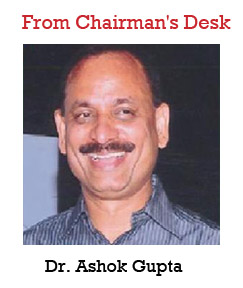Chairman Message
It is an initiative started to help people with allergic disorders lead a good quality of life.
The members of the organisation include allergic individuals, their guardians, doctors, paramedics and social activist with an interest to help allergic patients. Lack of registry of allergic patients and for many years the absence of any definite degree course in allergy in the country acted as hindrances in the information on the prevalence of allergy in India. Demographic projections based on various studies predict 22% of the total population in India suffer from some kind of allergy.
The perspective of food allergy patients in India reflect any food can be allergenic, Patterns of common allergens differ across regions and cultures, Dairy, eggs, peanuts, tree nuts such as walnuts, almonds and cashews, fish, shellfish, soya, wheat, seasame top the list, Incidence of allergies to milk, eggs and wheat is less frequent then in the West, Dals (Pulses) such as chickpeas more common.
It is evenly distributed, more in urban and semi urban areas as compared to rural areas, changing food pattern moving away from Traditional Dal, Rice, Vegetables to Fast Food, Ice cream, Chocolate and additionally increased number of houses have Carpets & Pets.
The one single site in India in the year 2008-09 conducted 66778 tests for allergy and found the following allergens & their percentage distribution is Mite – 36.1%, Cockroach – 32.5%, Asp. Fum. – 28.8%, H. dust – 21.8%, Bermuda Grass – 21%, Shrimp – 18%, Johanson Grass – 15.9%, Wheat – 12.4%.
All this reflects allergies are on the rise in India.
This year the Allergy Care India undertook the following activities:
- Patient Care Camps
- Public Education & Social Sensitization
- Counseling sessions
- Participation in Medical Conferences
- Support to Blood Donation Camps
- Research Publication
- Networking with governmental agencies, academic institutions, scientific research organizations & NGO's in the development of Food Safety Management Program
International alliance of patient organizations
I had the opportunity of attending the European Academy of Clinical Immunology and Allergy (EAACI) annual scientific congress in June. EAACI has established a Patient Organisations Committee to help them develop better care and increase safety and quality of life for individuals with allergy and asthma. The move was discussed with, and welcomed by, the members of the Food Allergy and Anaphylaxis Alliance (FAAA) of which Allergy Care India is a member. Allergy Care India was invited by EAACI to nominate a representative to become a member, and I was subsequently appointed to the Patient Organisations Committee and invited to the congress.
The network of organisations associated with FAAA and EAACI has expanded significantly in recent years, with countries from Asia, the Middle East and South America, as well as more from Europe, now participating. This reflects the global spread of food allergy in the last decade. As a result of such diverse membership, many new topics have been raised for discussion, For example, at the FAAA meeting in September last year, discussions on guidelines for allergic children at school identified a number of barriers that many of the new member ranged from legislation that prevented teachers from giving medications, through to no or limited access to auto-injectors.
With this in mind it was agreed that global minimum standards should be established for the care and protection of children with food allergy at risk of anaphylaxis in education settings.





